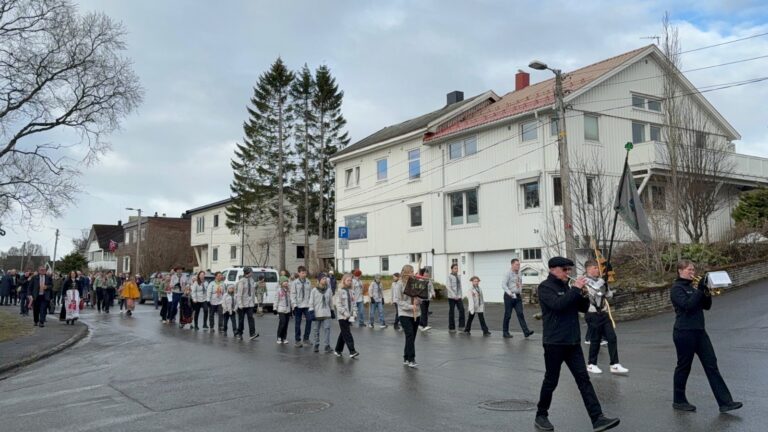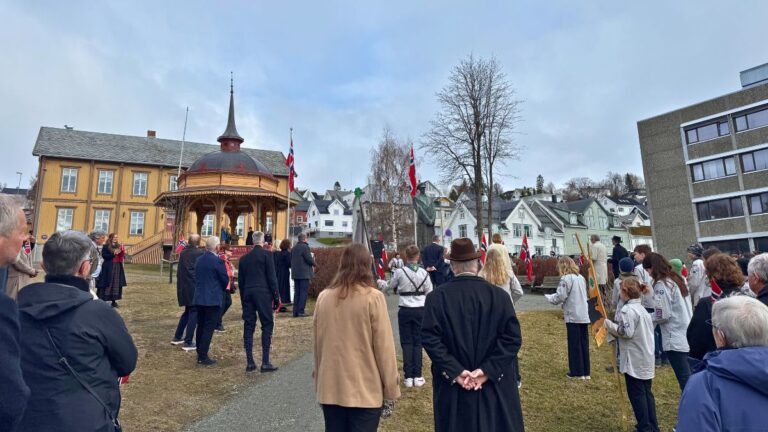In Norway, the word speider carries a sense of quiet respect. It refers to members of the country's scouting movement, young people (and adult volunteers) who hike, camp, build fires, and learn to navigate both the landscape and life's challenges.
But how does this Nordic approach to scouting differ from the more familiar versions found in countries like the United Kingdom or the United States? Let's take a look at what I found out.

On my recent visit to Tromsø for Norway’s Constitution Day, I set my alarm early to catch the very first event on the programme: a 7am gathering and parade starting at ‘Speiderhuset', just above the city centre.
At the time, I had no idea what ‘Speiderhuset' was. I assumed it might be a community hall or some kind of civic building. But when the early morning ceremony began, and I saw the flag being raised by young people in uniform, followed by a quiet, respectful procession through the streets, I wanted to know more.
Later on, I found out that Speiderhuset is the local headquarters of the Norwegian Guide and Scout Association. The group I had seen taking part in the ceremony were members of Norway’s speider movement.
That early morning glimpse turned into a deeper interest. How does scouting in Norway work, and how does it compare to the more familiar models in countries like the UK or US?
As it turns out, Norway’s approach to scouting is unique. It is rooted in the country’s deep respect for nature, community, and self-reliance. Here's what I've learned.
A Brief Look at the Norwegian Scouts
Norway’s scouting movement is small but influential. It has been shaped by the country’s strong tradition of outdoor life (friluftsliv) and a deep-rooted culture of self-reliance.
Today, the movement is primarily represented by two organisations: Norges Speiderforbund (The Norwegian Guide and Scout Association) and KFUK-KFUM-speiderne (the YMCA-YWCA Scouts). Together, they support more than 25,000 members across the country.
Scouting in Norway is open to everyone, regardless of gender or background, and is typically divided into age-based sections ranging from six to 25 years old.

Meetings often take place in community halls, schools, or cabins located near forests and lakes. A large portion of the activity happens outdoors throughout the year, regardless of the weather.
Traditions That Emphasise Nature and Simplicity
One of the most distinctive features of Norwegian scouting is its close connection to the natural environment.
Rather than focusing heavily on badges or formal ranks, the movement emphasises practical skills, environmental awareness, and cooperation within small groups. Scouts learn to hike in the mountains, paddle through fjords, build shelters, and stay safe in winter conditions.
There is also a strong tradition of patrol independence. Small groups are encouraged to plan and carry out their own activities, helping young people develop leadership, decision-making, and teamwork skills from an early age.
Large national gatherings, known as landsleir, bring thousands of scouts together every few years. However, most scouting experiences in Norway are local in nature.
These might include building a fire at a forest cabin, canoeing along a nearby river, or working on community service projects in the local area.
A Different Tone from Abroad
In many countries, scouting is closely associated with formal uniforms, structured salutes, and a clear hierarchy. While Norwegian scouts do wear uniforms during formal events, the overall approach is more relaxed.
In fact, it is common for the official shirt to be quickly swapped for a rain jacket as soon as the weather turns, which happens often in Norway, of course!
Scouting in Norway also tends to be more inclusive and less religiously oriented than in some other countries. Even the KFUK-KFUM groups, which are historically rooted in Christianity, place greater emphasis on shared values and community participation than on specific religious teachings.
Public Perception and Continued Relevance
In Norwegian society, speidere are generally held in high regard. They are seen as responsible, community-minded, and closely connected to the outdoors.
On Constitution Day, scouts often play a visible role by leading early morning parades and flag-raising ceremonies. Their presence evokes tradition, discipline, and a connection to national identity.
That said, the movement is not without its challenges. Like many long-established youth organisations, Norwegian scouting has seen some decline in membership in recent years.
The rise of digital entertainment and structured extracurriculars means that fewer young people are seeking out unstructured time in nature. Despite this, many families still value scouting as a meaningful way for children to unplug and reconnect with the physical world around them.
What do you think? Have your children joined the Norwegian scouts? I'd love to get your thoughts and experiences down in the comments.


I came to Norway from the UK 20 years ago and a spent many of those years as a Sjøspeider leader. Scouts are an amazing institution that gives so much to kids, young adults, and leaders. Through fun and occassionally challenging activities a Scout will gain skills that he/she will use throughout his/her life. There’s nothing else quite like it.
Be Prepared / Altid Beredt.
Mike